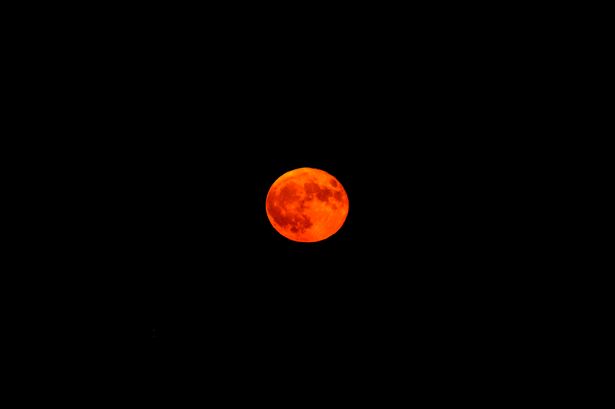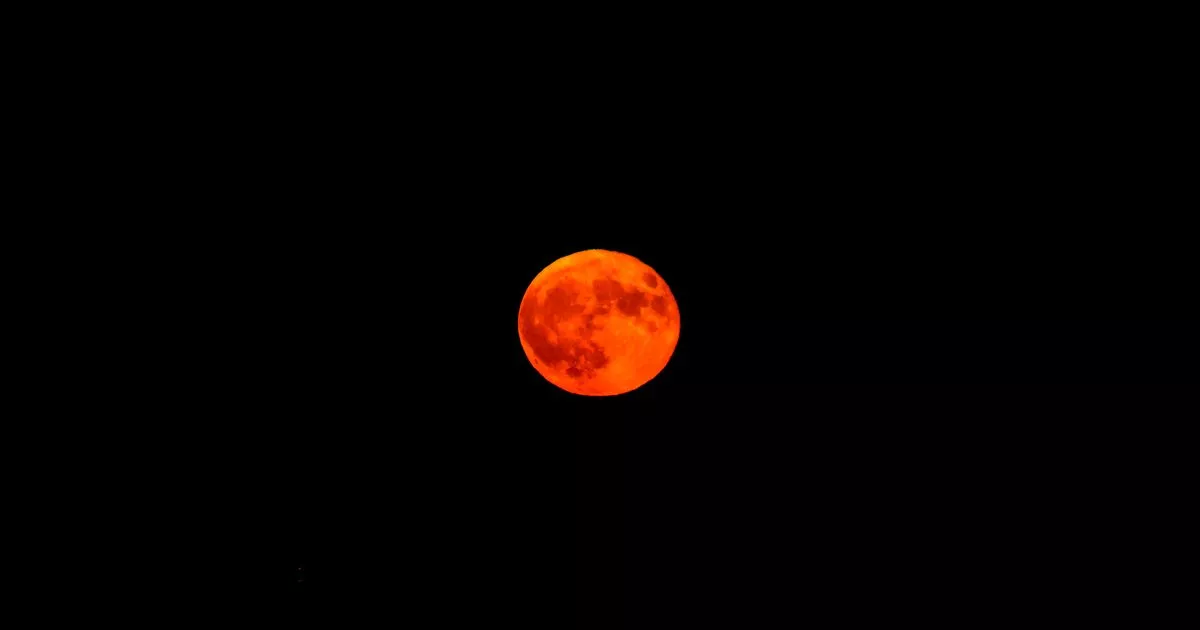Sky-watchers could be in for a treat as the moon is set to take on a dramatic appearance from Tuesday A Strawberry Moon, sometimes referred to as a Rose Moon, can have reddish-pink hues(Image: John Myers)
A Strawberry Moon, sometimes referred to as a Rose Moon, can have reddish-pink hues(Image: John Myers)
Sky-watchers could be seeing red this coming week due to a set of circumstances not due to be repeated again for another 18 years. The full moon in June is known as a Strawberry Moon which, as previously reported, is a name that originated among native tribes in north east America who took it as signalling the start of the strawberry-harvesting season.
But this year it could actually live up to its name and take on a red tinge. If conditions are right, the moon could appear with a rosy glow – alternative names for June’s full moon can be Rose Moon or Hot Moon – thanks to a phenomenon that is not due to be seen as well again for many years. The reason is that the moon will be at the lowest we will see it until 2043, staying close to the horizon after it rises as a full moon on June 10 and 11.
And it is due to being lower on the horizon that it will take on a red tinge. In this position, its light has to travel through a much thicker slice of Earth’s atmosphere than when it is overhead. That extra distance, as DevonLive explains, does the following two things:
Rayleigh scattering
Molecules of nitrogen and oxygen plus ‘aerosols’ – tiny solid or liquid particles suspended in air – scatter short-wavelength light, of violet, blue and green, far more efficiently than long-wavelength light which is orange and red. The longer the light’s journey through that haze, the more of the blues are stripped away, leaving mainly reds and oranges to reach the eyes.
Dust, smoke and pollution
Close to the ground, the air contains more dust, water vapour and human-made pollutants. These larger particles also selectively absorb and scatter light but do it in such a way that it further mutes the blues and greens while letting the warmer colours through.
So, these two effects combined can mean the moon takes on a coppery or crimson tint whenever it’s near the horizon. The same physics explains why sunsets are red and why a Blood Moon during a lunar eclipse looks red: all of the sunlight reaching the eclipsed moon has been filtered through Earth’s thick, dusty atmosphere at sunrise and sunset around the planet.
For the UK, the date of the full Strawberry Moon this year is June 11. It will be best seen in the evening of June 10 at moonrise, rather than on the morning of June 11 when it is technically 100% illuminated. Moonrise on June 10 will be between 9pm and 9.30pm then the moon will be full in the morning on June 11 at 8.43am, after sunrise.
With the moon tracing its lowest path of the year, its rising at dusk on June 10 is due to give it its most dramatic and reddish appearance. At meridian transit – which is its highest point at night – it will reach around just 10°-12° above the horizon, so you’re looking at about the height of two fists held above the horizon.
